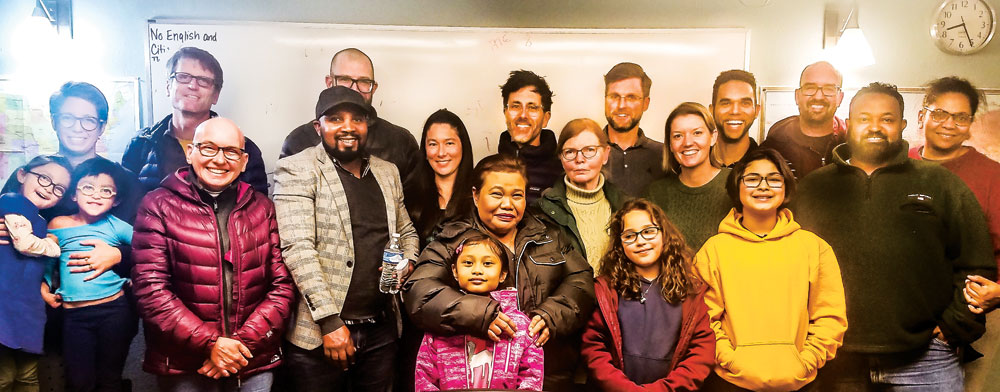
Photo courtesy of East Colfax Collective.
“From what I’ve seen, people are working together and they see their destinies as intertwined,” says Nebiyu Asfaw of those he talks to along East Colfax. Asfaw is a member of the recently formed East Colfax Community Collective that introduces a new voice in ongoing discussions of Denver’s East Area Plan (EAP). The plan offers a 20-year vision for economic development in the East Colfax corridor from Colorado Blvd. to Yosemite St. The Collective is especially concerned about displacement, the community engagement process, and the City holding developers accountable.

“We want the City to be introspective and reflect on some of the other projects that we feel haven’t gone well, like the Welton Street project,” says community organizer Brendan Greene.
The Collective wants the City to be more creative and leverage its power to prevent displacement and ensure protections for current EAP residents. While proponents of the EAP tend to focus on building affordable housing in the corridor, the Collective emphasizes the need to preserve existing affordable housing. Collective members don’t believe the City and other community groups fully grasp the true urgency “around anti-displacement policies or concrete measures to create more affordable housing for those below 30% AMI [Area Median Income],” according to an October press release. Denver’s AMI, according to the City’s Office of Economic Development and Opportunity is $92,800 for a household of four. An AMI of 30% for this same household is $27,850.
Collective members also question how effectively the City has managed community outreach in the past two years. Asfaw says a lot of the mom and pop shops “honestly have not had the level of engagement that they needed. And that’s not to criticize the folks that have been reaching out; they’ve been trying but it hasn’t been effective.” He references small businesses like Lucy’s Ethiopian Restaurant, where they may have only two or three people working and attending a community meeting requires closing the restaurant.

“Once the developer buys the land, it’s theirs. It does not seem like the City has control once the developers come in,” says Towanna Henderson, an East Colfax community leader who recently joined the Collective.
“When it comes to engaging the community,” says Henderson, “allow the community to determine what that looks like.” A longtime E Colfax area resident, Henderson has attended numerous meetings with City planners, homeowners, renters, business owners, and other stakeholders. She says typically, the City does most of the talking, allotting about 20 minutes to the community, during which time people are also expected to review and comment on complicated maps and charts.
With average household incomes ranging from $36,000 to $114,000 across the different neighborhoods encompassed by the EAP, primary concerns vary. While some other community groups have expressed concerns about the EAP’s suggested options for increasing density, density is not among the top concerns identified by the East Colfax Community Collective. They do, however, agree with concerns expressed in other neighborhoods about the City’s limp approach to reigning in developers’ worst impulses.
Residents united under the moniker “Denver East Neighborhoods First,” in October shared an open letter to City Council signed by Hale resident and “First” member Jeanne Lee. Lee criticizes the seemingly unbridled development permitted under the EAP: “Affordability is not required and current affordable units will be lost. There is also no requirement for a developer who builds on Colfax or in other sections of the East Area to provide affordable units.”

“We can’t control market forces,” says Nebiyu Asfaw with the Ethiopian American Development Council. “We need to focus on what we can control. One of these is TIF [Tax Increment Financing], the tax incentives. What exactly are we giving away to incentivize what and who?”
Revitalizing a neighborhood should benefit the neighborhood, says Brendan Greene, community organizer for the collective who wants the City to reflect and learn from past mistakes. Though reflection does not appear to be part of its mandate, Denver’s newly created Department of Housing Stability (HOST), is charged with both creating and preserving existing affordable housing. The EAP looks like a good place to start. For further information on the EAP, including upcoming meetings: DenverGov.org/eastplan.
One-on-One or Small Group Meetings with the East Area Plan Team
Dec. 3, 12:30-5pm Park Hill Library
Dec. 12, 6:30-8 pm Ashley Elementary
Use online sign-up at DenverGov.org/eastplan to avoid a wait




0 Comments